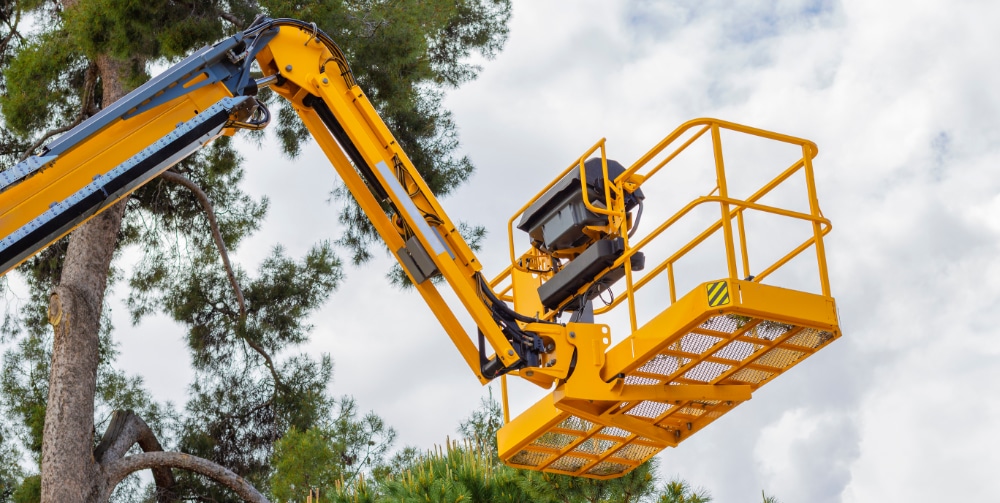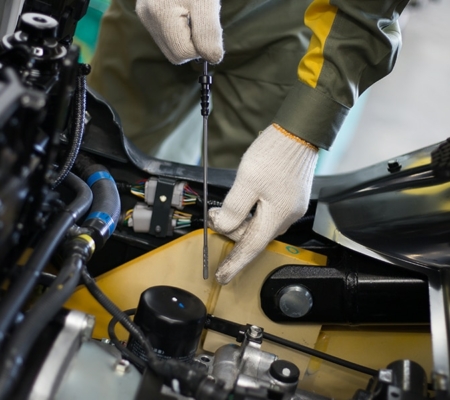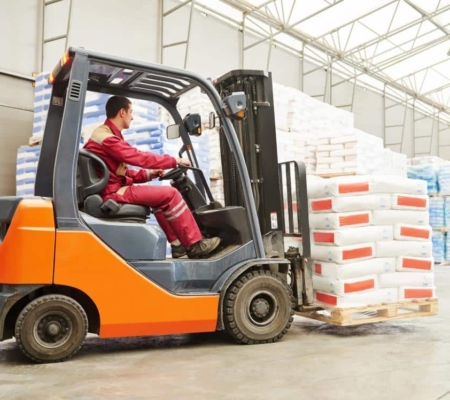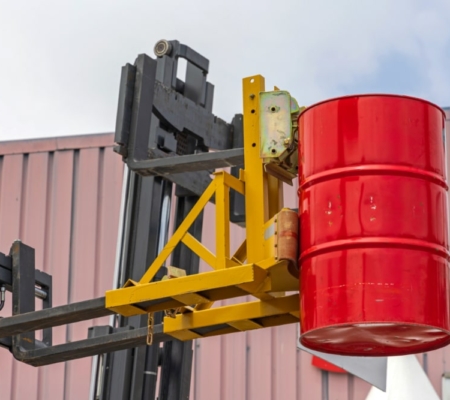Important Forklift Attachments: All You Need To Know!

Forklift attachments are crucial when it comes to handling materials of various forms. Without them, it would be impossible for forklift operators to transport loads from one area to another. With that in mind, forklift attachments are often overlooked. If you don’t use the right attachment then this can lead to potential damages to your goods, vehicle or even personal injury.
Specialised Forklift Attachments
There are a number of specialised forklift attachments available to choose from, some of which can be found below.
Bale Clamps
A bale clamp can handle any material that doesn’t use a pallet. This can include cotton, hay or wool. Bale clamps are often a very specific type of clamp. Attachments like this are suited for handling most baled materials. This can include recycled plastic products, natural textile fibres, synthetic fibres and even waste paper. Bale clamps are suited to a number of industries too, including paper recycling and agriculture.
Benefits of bale clamps
- Increased efficiency
- Increased safety
- Give forklift operators a clear load view
Drum Handlers
Large or heavy drums are not only hard to manoeuvre, but they are also hazardous. Having the right drum equipment means you’ll experience fewer accidents while providing a safe environment for your team. Some forklifts use a sling to transport drums, but this is both unsafe and illegal. Using drum handlers ensures the right safety protocols are followed, and also guarantees a safe lifting operation.
Benefits of drum handlers
- Enhances safety- guarantees a safe lifting operation
- Provide better control and stability during the lifting process.
- Versatility- can be adopted for different-sized drums.
Jibs
A forklift jib is a device that attaches to the forklift’s carriage. An angled arm is attached to a hoist, meaning that materials can be moved to places that would otherwise be out of reach. A forklift with a jib makes it easier to move in different directions and allows access to angles that would otherwise not be possible.
Benefits of jibs
- Enhanced safety
- Increase in productivity
Safety Cages
Safety cages provide a safe working space for workers to carry out a variety of tasks within a warehouse. Forklifts tend to be used to lift materials and products. When a safety cage is added, workers can perform a number of tasks within the warehouse. Forklift safety cages can be used to lift employees to areas that would otherwise be out of reach. They can also reduce the chances of an accident from occurring, by allowing workers to take on higher work tasks without fear.
Benefits of safety cages
- Improve productivity & efficiency
- Increases safety and accident prevention
- Compliance with health and safety regulations
White Good Clamps
White good clamps are capable of handling a large number of appliances. Articulating pads are used with a stabilised lifting structure to reduce product damage, by using less force when lifting. When moving appliances or electronics, accuracy matters. That is why white good clamps are essential. They result in more productivity, less damage and most importantly, happier customers.
Benefits of white good clamps
- More productivity
- Preservation of product quality
Boom Attachments
A boom attachment is designed to fit onto a straight mast. It has an extendable reach, and it can lift suspended loads. A jib boom has a shackle and hook at the end so that the jib can attach to the load with ease. Jib booms come in two forms, fixed and extendable. Fixed booms are best for repetitive lifting tasks, such as in a rental yard. Extendable alternatives are best when the height changes regularly, such as on construction sites.
Benefits of boom attachments
- Enhanced productivity and efficiency
Important forklift attachments allow your forklifts to operate at a higher level of efficiency. They are also incredibly versatile, and when the right attachment is chosen, it’s easy to push, clamp, pull, shift and even rotate almost any kind of load you can think of.
Factors to Consider when Choosing Forklift Attachment
There are numerous factors that have to be considered when choosing a forklift attachment. Some of which, can be found below.
Weight Capacity
Adding an attachment reduces lifting capacity. A lot of this comes down to the weight of the attachment itself. When you add an attachment, most of the time, this is added onto the front of the forklift truck, which affects the centre of gravity. For this reason, counterweights are often added onto the back, to stop tip-overs. This again, reduces the weight the forklift can lift.
Versatility and Adaptability
Important forklift attachments allow your forklift to become way more efficient when it comes to handling bulky or unique products. An attachment helps you to lift any load you can imagine, not to mention that you don’t have to keep changing the attachment if you buy one with versatile capabilities. If you work in a fast-paced working environment then this can save time, money and energy, as you will be able to use the same attachment to handle multiple jobs.
Compatibility with the Forklift
Not every attachment is going to be compatible with every forklift. To ensure the safety of your team, it is important to select the right forklift attachment. Therefore, you must carefully examine the specifications of the attachment and ensure its compatibility with your make and model. Neglecting this step may compromise the safety of your team
Importance of Forklift Attachment Maintenance
Forklift maintenance can significantly reduce unexpected downtime. Following the maintenance list within your working manual is a good idea. Drivers can also report problems as they see them, which means you can get the issue repaired before it worsens. It’s also worth noting that rental fleets do come with maintenance schedules, built into the contract. Beyond daily visual inspections, you should be performing scheduled maintenance after 100, 500, 1,000, 2,000 and then 4,000 hours.
So, using different types of forklift attachments is crucial if you want to improve the handling of loads, productivity and efficiency of your warehouse. They are also suited to a huge range of industries, using a forklift with the right attachment reduces the risk of goods being damaged and reduces forklift accidents. If you want to benefit your operation then it’s recommended that you explore the attachments that are available, so you can make your business run more efficiently while ensuring that your team stays as safe as possible. Take a look at our website to see the different forklift attachments we supply.


